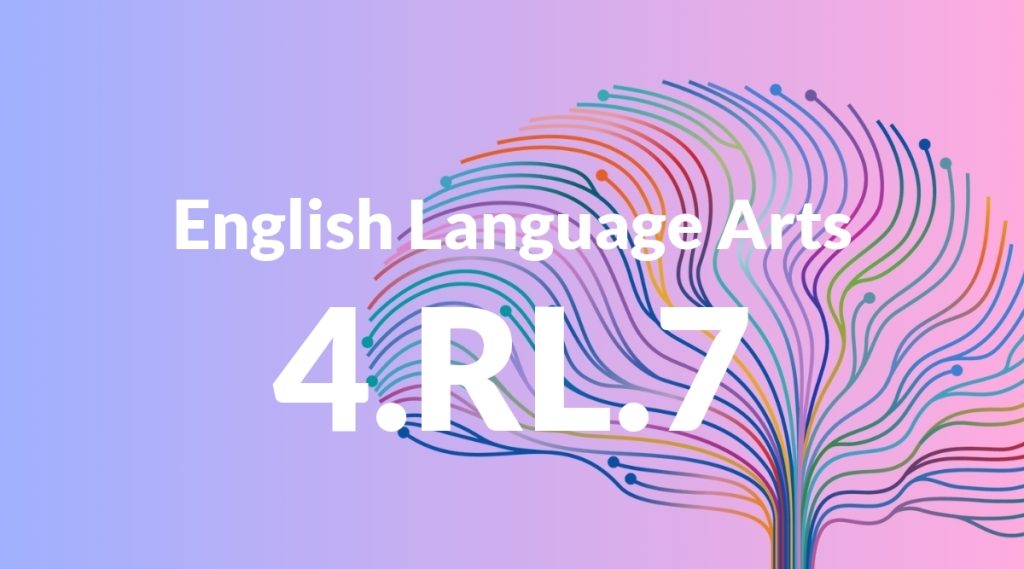Standard: 4.RL.7 – Make connections between the text of a story or drama and a visual or oral presentation of the text, identifying where each version reflects specific descriptions and directions in the text.
Grade level: Grade 4
Subject: English Language Arts
Domain: Reading: Literature
Teacher Overview
This standard focuses on helping students make connections between the text of a story or drama and its visual or oral presentation. This skill is crucial as it allows students to understand how different mediums can convey the same story in various ways, enhancing their overall comprehension and critical thinking abilities. Students should already understand basic story elements and be familiar with different types of media presentations. This foundational knowledge is essential for them to effectively compare and analyze different versions of a story.
After mastering this standard, students will be able to critically analyze and compare various forms of media, enhancing their comprehension and analytical skills. They will also be better prepared to understand the impact of different mediums on storytelling.
Common Misconception 1
A common misconception is that all versions of a story are identical. This is incorrect because different mediums often make changes to better suit their format, such as adding visual elements in movies or altering dialogue in plays.
Intervention 1
To address this misconception, have students create a Venn diagram comparing specific elements of the text and its visual or oral presentation. Discuss why these differences might exist and what impact they have on the story.
Common Misconception 2
Another misconception is that visual or oral presentations do not need the same level of analysis as written texts. This is incorrect because all forms of storytelling require critical thinking to understand how they convey the story’s message and elements.
Intervention 2
To counter this misconception, engage students in discussions that require them to analyze visual and oral presentations just as they would a written text. Use guided questions to help them delve deeper into the analysis.
Prerequisite Knowledge
Students should have a basic understanding of story elements such as characters, setting, plot, and theme. They should also be familiar with different types of media presentations, such as books, movies, and plays.
Subsequent Knowledge
Students will develop the ability to critically analyze and compare various forms of media, enhancing their comprehension and analytical skills. They will also be better prepared to understand the impact of different mediums on storytelling.
Instructional Activities
- Watch a movie adaptation of a book and compare specific scenes.
- Read a play and then watch a performance, noting differences and similarities.
- Listen to an audiobook and follow along with the text, discussing how the narration influences understanding.
- Create a storyboard that visually represents a chapter from a book.




